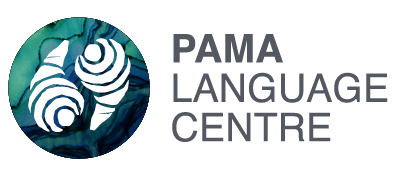Uw Oykangand Linguistic Notes and Sources
Roth, in 1899 and 1910, referred to Uw Oykangand as Koko Wanggara. Sommer (2006:6) explains how this was the first language name he was given for Uw Oykangand when he started fieldwork in Kowanyama in 1964. He believes this to be an exonym, taking origin from the expression in Uw Oykangand and Ogh Undjen “ew angkar”, i.e. mouth ache – “the language has some difficult consonant sequences that must have bewildered their neighbours”.” Koko” and “gugu” are both reflexes of the Proto Paman form *kuuku “speech, language” (Hale 1964, 1976).
Other known exonyms for Uw Oykangand are Koko Mirandang by the Kok Kaber (Sommer, 2006) and Koltvwonhm by the Yir Yoront (2018, AIATSIS website).
Sommer often refers to Uw Oykangand as Kunjen. He explains (2006:7) that by the 1960s this pidgin term, which had been initially used by others, started to be consistently used by the “speakers of those languages inland from the western coast of the Peninsula for which the initial consonant of each word had been lost. This phonological feature serves to define the group which internally also maintained coherent social and ritual ties”. In Kowanyama these languages were Uw Oykangand, Olgol, Ogh Undjan and Kawarrang but Sommer (2006:7) also mentions Ulkulu (from around Ebagoola) and Koko-minni (a rather close dialect of Kawarrang, if not actually Kawarrang) as being part of this group.
Sommer (1969) referred to it as the Central Paman sub-group of languages.
However, there is disagreement with this view: The genetic affiliation of Uw Oykangand, Uw Olgol and Olkola is not with Alaya-Athima but rather with the Southwest Paman family: Kuuk-Thayorre, Yir-Yoront and Yirrk-Mel, Kok-Kaper=Koko Bera, Koko Dhawa, Kuuk-Narr and Kutjar (Alpher 1972, Alpher and Nash 1999)
In his 1939 survey Sharp identified Roths’s Koko Wangara as the Oikand.
Mathews used the term Koonjan and Sommer often refers to Uw Oykangand as Kunjen. He explains (2006:7) that by the 1960s this pidgin term, which had been initially used by others, started to be consistently used by the “speakers of those languages inland from the western coast of the Peninsula for which the initial consonant of each word had been lost. This phonological feature serves to define the group which internally also maintained coherent social and ritual ties”. In Kowanyama these languages were Uw Oykangand, Olgol, Ogh Undjan and Kawarrang but Sommer (2006:7) also mentions Ulkulu (from around Ebagoola) and Koko-minni (a rather close dialect of Kawarrang, if not actually Kawarrang, mentioned by Palmer 1884) as being part of this group (Sommer 1969).
Sommer (2006:22) explains that Sharp’s 1939 survey “includes a treatment of the “Olkol” type of social organisation (…) embracing the following groups: Koko Minni, Olkol, Oikand, Okundjain, Ok Angkol, Okaurang.” However, (Sommer 2006:7) “the Oykangand share many of their social conventions with other Peninsular groups (Sharp 1939, McConnel 1938”.
Sommer (1997) explains that there is a persistent tradition in Kowanyama according to which the Highbury area was occupied by Olgol and even Oykangand clans.
Sommer locates the location of this language group at the centre of the Peninsula (1972a)
Sommer (1969:50) referred to it as the Central Paman sub-group of languages “on solely linguistic grounds”. In Sommer’s view (2006:7) “Oykangand shared a vocabulary structure, certain matters of syntax and the phonological character of their Central Paman congeners, they also shared linguistic features of other Peninsular languages (…)” Alpher (1972, 2016) disagrees with this view.
Alpher, Barry. 2016. Connecting Thaypanic. pp.39-60 in Land and Language in the CYP and the Gulf Country, ed. by Jean-Cristophe Verstraete and Diane Hafner, John Benjamin Publishing Company
Sommer, B.2008. Sommer Collection: Rationale and Introduction. From UQ Fryer Library’s catalogue. Accessed January 2018. https://www.library.uq.edu.au/fryer-library/ms/uqfl476_introduction_to_collection.pdf
Sommer, Bruce A. 2006. Speaking Kunjen: An Ethnography of Oykangand Kinship and Communication. Pacific Linguistics:Camberra
